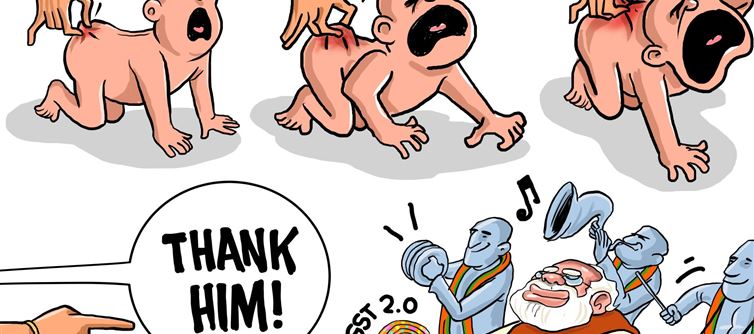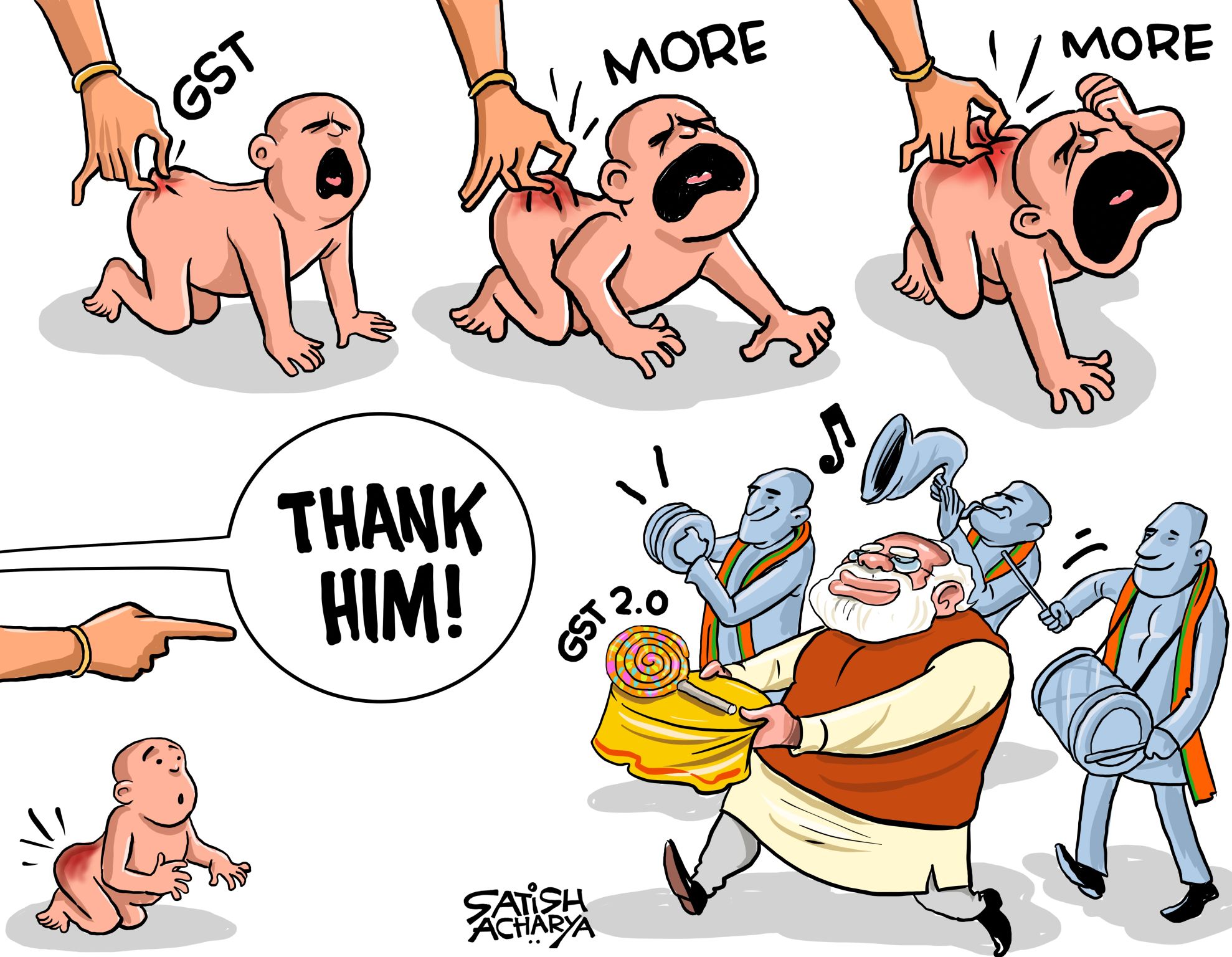
This political cartoon comments on the implementation and public reaction to India's Goods and services Tax (GST) and the introduction of its revised version, GST 2.0.
The labels on these babies read "GST," "MORE," and "MORE," reflecting the escalating burden of taxation felt by taxpayers and businesses since the inception of the GST regime in india in July 2017.
The expression of pain and discomfort on the babies symbolizes the distress and challenges faced by small businesses and consumers due to the complex and sometimes increasing tax rates across various goods and services, after the rollout of GST.

Contrasting scene:
A baby with a red mark on its backside (indicating it has been pinched) is shown looking back, while a hand points towards a cheerful man walking, accompanied by musicians.
This man represents prime minister Narendra Modi, depicted holding a rolled-up candy labeled "GST 2.0." The musicians following him imply celebration and promotion.
The term "GST 2.0" refers to a newer phase or version of GST, aimed at simplifying the system, resolving prior issues, and possibly promising better ease of compliance through wallet PLATFORM' target='_blank' title='digital-Latest Updates, Photos, Videos are a click away, CLICK NOW'>digital reforms and lower rates on certain items.
The cartoon implies that while the public (represented by the babies) suffered under initial GST implementations (pain of higher taxes and compliance difficulties), the political leadership seeks public gratitude for evolving and promoting the new GST reforms.
Technical Context:
GST, introduced on July 1, 2017, unified India's multiple indirect taxes into a single tax system with 4 main slabs: 5%, 12%, 18%, and 28%.
Despite simplifications, various GST rate revisions and classification disputes caused increased costs for certain sectors, causing dissatisfaction.
GST 2.0 signifies ongoing reforms like the introduction of new compliance methods such as e-invoicing, QRMP scheme for small taxpayers, increased refund process efficiency, and reduction in tax slabs or rates for certain goods.
The cartoon critically highlights the gap between political promotion of reforms and the ground reality experienced by taxpayers.
In summary, the cartoon uses symbolic imagery to show taxpayers’ pain during GST rollout and increasing tax burden and contrasts it with political leadership's call for public thanks over the next phase of GST reforms aimed at addressing those challenges.




 click and follow Indiaherald WhatsApp channel
click and follow Indiaherald WhatsApp channel